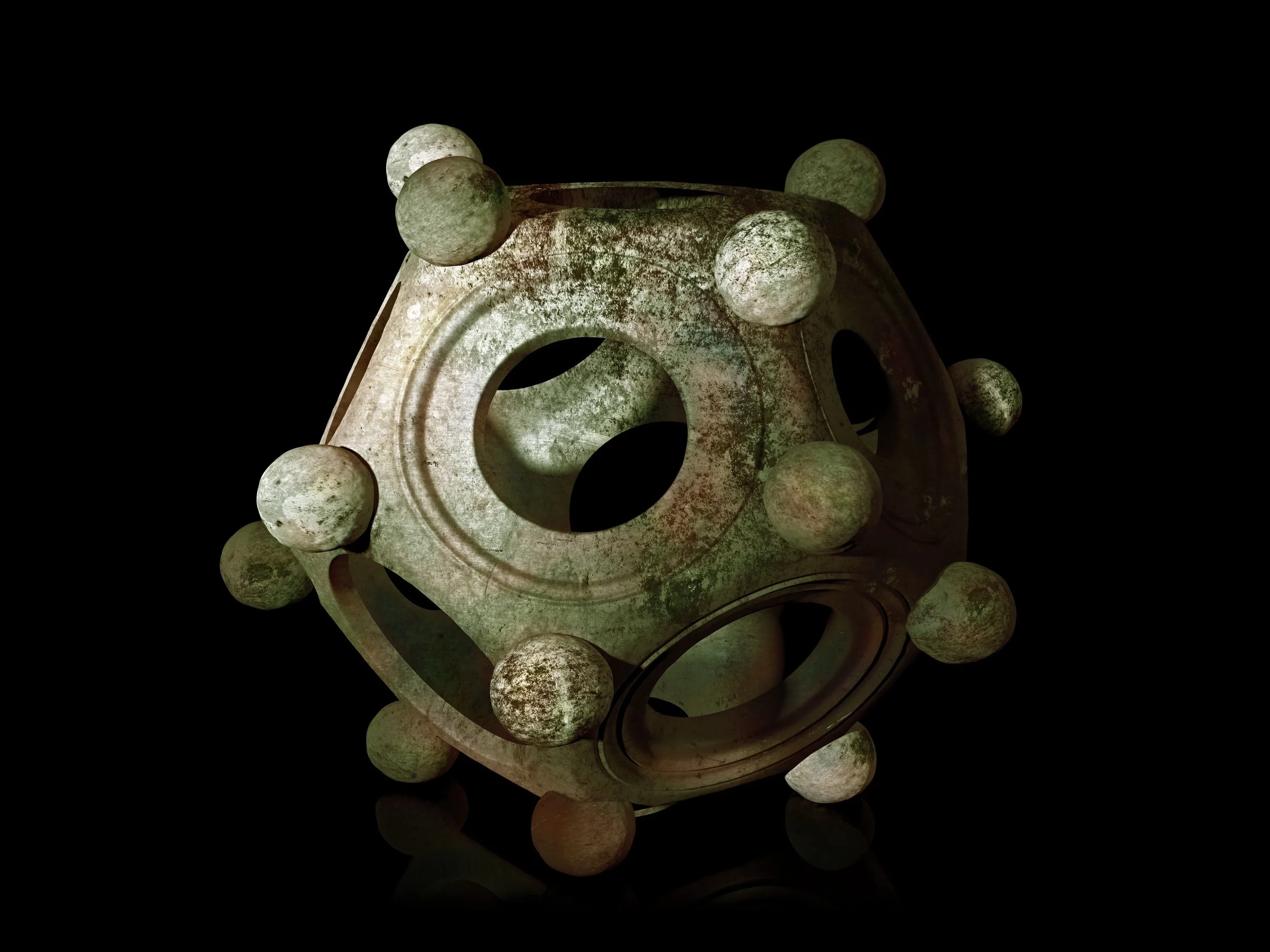The Enigmatic Roman Dodecahedron
There’s a little bit of an archaeologist in all of us. The Indiana Jones series, and many others like it, has sparked in millions of people an interest in artifacts and treasures of the past. Whether it’s sunken treasure or Mayan sculptures or Viking swords, we are fascinated by objects from the past. But, what happens when archaeologists don’t recognize an artifact or cannot identify the purpose it served in history? In reality, this is a common enough occurrence. One such object that, for centuries, has fascinated seekers of the past is the Roman dodecahedron.
First discovered in the early 18th century, a dodecahedron is a twelve-sided, hollow object. Each of the twelve pentagonal sides has a hole that is open to the center, and no two holes are the same size. At each corner point of each pentagon, there is a knob that gives the object a somewhat prickly appearance. Most dodecahedra that have been discovered are made of bronze, but stone has also been discovered. Some speculate that these devices could have also been made of wood, which would undoubtedly have decayed away over centuries.
The dodecahedra are dated to the Romans from the 2nd to the 4th centuries AD. They have been found all across Europe, from Great Britain in the west to Hungary in the east. They have been found as far south as Italy and as far north as Germany, with the latter being the region where the greatest number of specimens have been found. Most dodecahedra have been found in archaeological sites that were once military encampments. However, others have been found elsewhere. Of note, one was found in the burial site of a wealthy woman, and two were found amongst coin hoards.
There is much speculation about the purpose of the dodecahedra. Theories have been postulated that they were used as devices for knitting gloves. This theory has flaws, particularly as people have tried to make gloves with the devices and have found that there would have been much more effective ways. Another hypothesis is that they were used as planting calendars. This does not seem plausible, as the Roman calendar was already in use by the 2nd century. Also, this would not account for the great number of dodecahedra being found in ancient military encampments. Two theories that would account for that, however, are that the objects were some type of game to pass the time, or that they were some type of range finders for the use of military projectiles. The latter does not explain the knobs on the outside, or why they have been found as part of wealth and treasure outside of military settings. The objects have also been considered religious artifacts and even horoscopes. Each of the twelve sides could correspond to a sign of the Zodiac. Interestingly, a dodecahedron was unearthed in Switzerland in the 1980s that had a name of the Zodiac engraved on each face. The holes could have corresponded in some way to a sign. However, as with other theories, this does not account for the exterior knobs.
Despite the many theories, archaeologists still do not understand the purpose for the dodecahedra. No writings from that era have been found that mention the objects. So, scientists are left to guesswork until more clues come forward. Perhaps the truth will be discovered, one day, and we can look forward to that revelation with patience. After all, if Indiana Jones taught us anything, it’s that archaeology is more of an ongoing puzzle than an immediate slam dunk.

